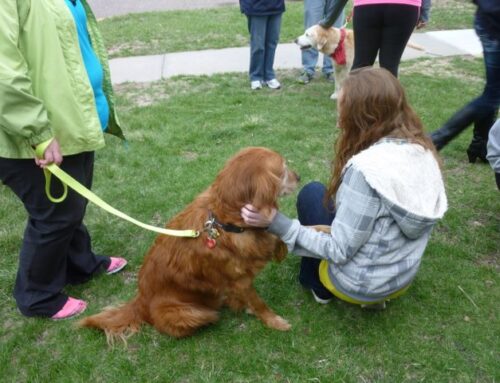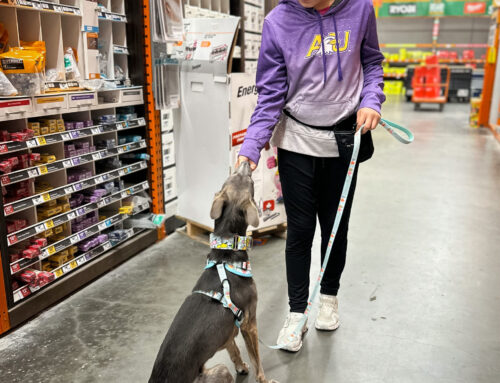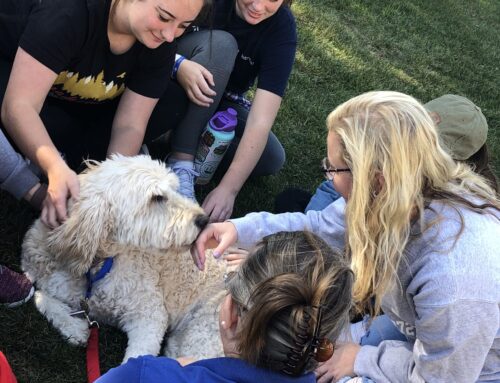There is a long history of using animals to help improve physical and mental health. Not only are they good for the owner, but therapy dogs can also make a big difference regarding the well-being of those they visit. Keep reading if this concept is new to you, as it will help change your perspective about dogs and the different kinds of therapy.
What are Therapy Dogs?
Dogs are affectionate, comforting, and supporting beings that if properly trained can make a huge impact in your community. Therapy dogs are can be found in retirement homes, hospitals, nursing homes, schools, and disaster areas. They allow strangers to touch and hug them and are safe around kids. Therapy dogs are usually owned by their owners or as in the case of Alliance of Therapy Dogs, teams can consist of a dog that doesn’t live with the handler. The caveat, in that case, is that the handler and therapy dog needs to have a very close relationship! Unlike service dogs that have a no-touch policy, therapy dogs are eager to be pet by strangers.
Difference Between Service Dogs and Therapy Dogs
Therapy dogs are not service dogs. Sometimes the general public might think they’re the same. However, therapy dogs and service dogs have very different jobs and qualifications. Service dogs are individually trained to do work or perform specific tasks for people with disabilities. In comparison, therapy dogs and their handlers are certified to visit hospitals, libraries, schools, and other facilities to benefit people in need. Their affectionate gestures sweet demeanors benefit people by lowering stress, sharing smiles, sometimes even assisting with rehabilitation. Therapy teams can aid in reducing loneliness and anxiety. These furry friends are sometimes called “comfort dogs.”
The Healing Power of Therapy Dogs
Therapy dogs have been found to be useful in a wide variety of situations. With their unconditional love, they can comfort patients diagnosed with a range of issues such as ADHD, autism, bipolar disorder, depression, post-traumatic disorder (PTSD), anxiety, and Alzheimer’s disease.
Sometimes all we need is attention and distraction from whatever is happening in life. Therapy dogs, with their comfort and support, can give us exactly what we need. According to research, people who have recently undergone surgery or a bad accident have responded positively to animal therapy. Hospitals have a massive inclination towards these dogs as their innocent faces help relieve patients of their stress and worries. Such interactions increase oxytocin, the mood-boosting hormone, and decrease cortisol levels, the stress hormone.
Physical Benefits of Therapy Dogs
Following are some of the physical benefits of therapy dogs
- Lowers overall physical pain
- Improvement in cardiovascular health
- Releases calming endorphins
- Lowers blood pressure
Psychological Benefits of Therapy Dogs
Following are the psychological benefits of therapy dogs
- Provide comfort and support
- Encourage communication
- Lifts spirits and improves mood
- Lessens depression
- Lessens loneliness
- Increases socialization
- Helps with emotional and speech disorders
- Motivates for talking a walk or working out
Which Dogs Can Be Therapy Dogs?
It should be noted that not all dogs have the capability to be therapy dogs. Just like we humans are not the same, dogs have different temperaments and natures. Some are very social, whereas others have a reserved nature and are comfortable only around their owners.
Therapy dogs can be purebred or mixed breed. The nature and temperament of the dog and the way the handler and dog communicate, are key features in becoming certified. Alliance of Therapy Dogs tester/observers evaluate teams in a variety of settings. Our testing is designed to make sure you and your dog have a good relationship with each other and that your dog has the right temperament for therapy dog work.
Uses of Therapy Dogs
Therapy dogs are not limited to nursing homes and hospitals. They can used in different facilities to reduce our stress and improve our moods. Dogs are a breath of fresh air, their warm cuddles, wagging tails, and cold noses help reduce stress levels. After all, they are called a man’s best friend for a reason.
Therapy Dogs in Schools
Many schools and colleges bring therapy dogs when finals and mid-terms are around the corner. They used to reduce stress and lift their moods. Many times teams can be found in schools or public libraries. Dogs are nonjudgmental and even the quietest of readers can be heard which encourages confidence in reading.
Therapy Dogs in Disaster Areas
Areas hit with disasters are much in need of mood-lifting and stress reduction. Therapy dogs that go to areas where there has been a natural or man-made disaster must work closely with the local police/organizations so that the teams can provide comfort without creating obstacles for the professionals.
Overall, dogs are indeed an asset and can be more than just a pet if appropriately trained.






